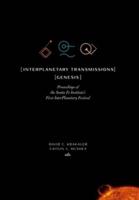Publisher's Synopsis
The lunar surface is covered by a thick blanket of fine dust. This dust may be readily suspended from the surface and transported by a variety of mechanisms. As a consequence, lunar dust can accumulate on sensitive power components, such as photovoltaic arrays and radiator surfaces, reducing their performance. In addition to natural mechanisms, human activities on the Moon will disturb significant amounts of lunar dust. Of all the mechanisms identified, the most serious is rocket launch and landing. The return of components from the Surveyor 3 provided a rare opportunity to observe the effects of the nearby landing of the Apollo 12 Lunar Module. The evidence proved that significant dust accumulation occurred on the Surveyor at a distance of 155 m. From available information on particle suspension and transport mechanisms, a series of models was developed to predict dust accumulation as a function of distance from the lunar module. The accumulation distribution was extrapolated to a future Lunar Lander scenario. These models indicate that accumulation is expected to be substantial even as far as 2 km from the landing site. Estimates of the performance penalties associated with lunar dust coverage and photovoltaic arrays are presented. Because of the lunar dust adhesive and cohesive properties, the most practical dust defensive strategy appears to be the protection of sensitive components from the arrival of lunar dust by location, orientation, or barriers. Katzan, Cynthia M. and Edwards, Jonathan L. Unspecified Center NAS3-25266; RTOP 506-41-41...










